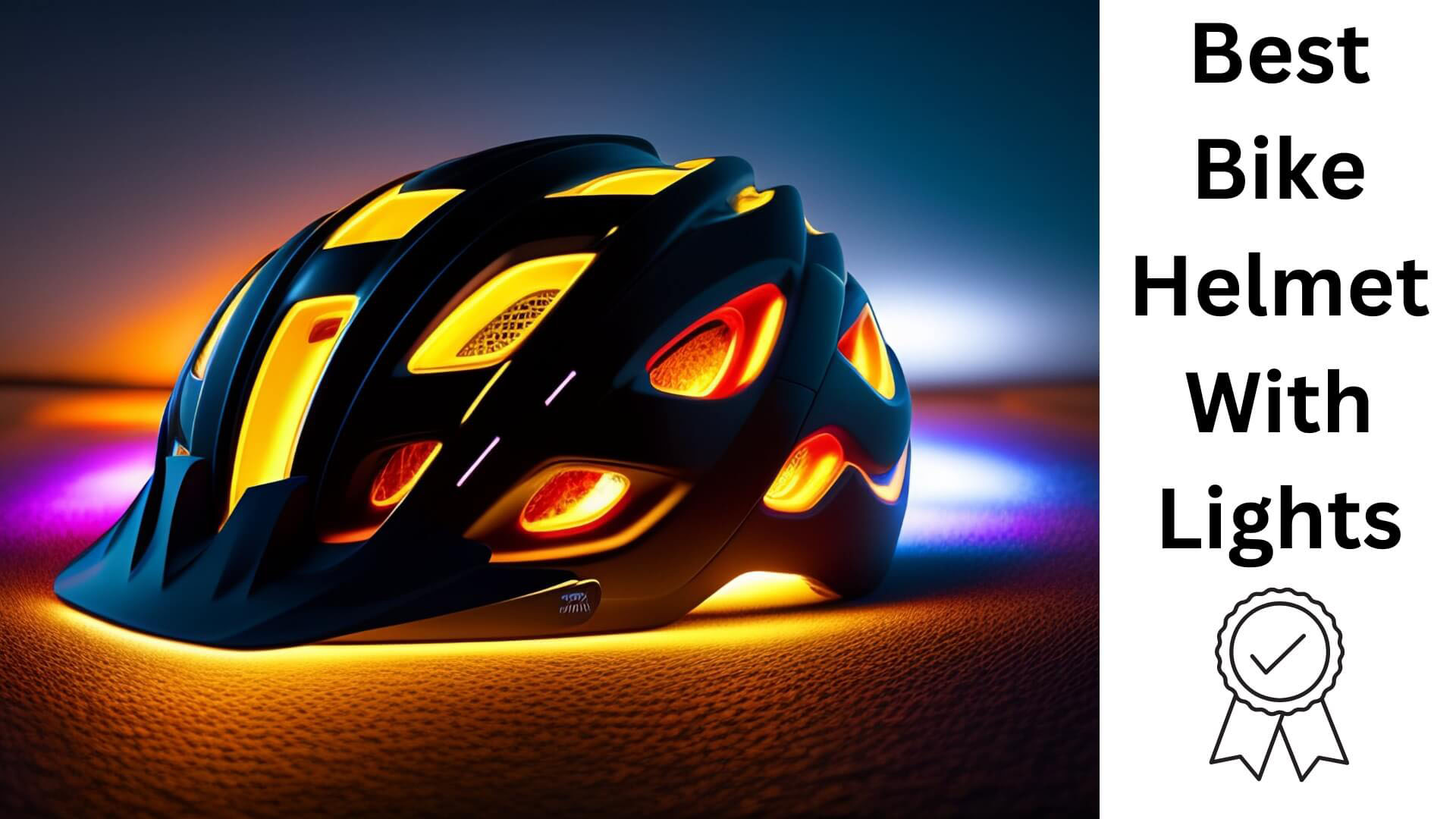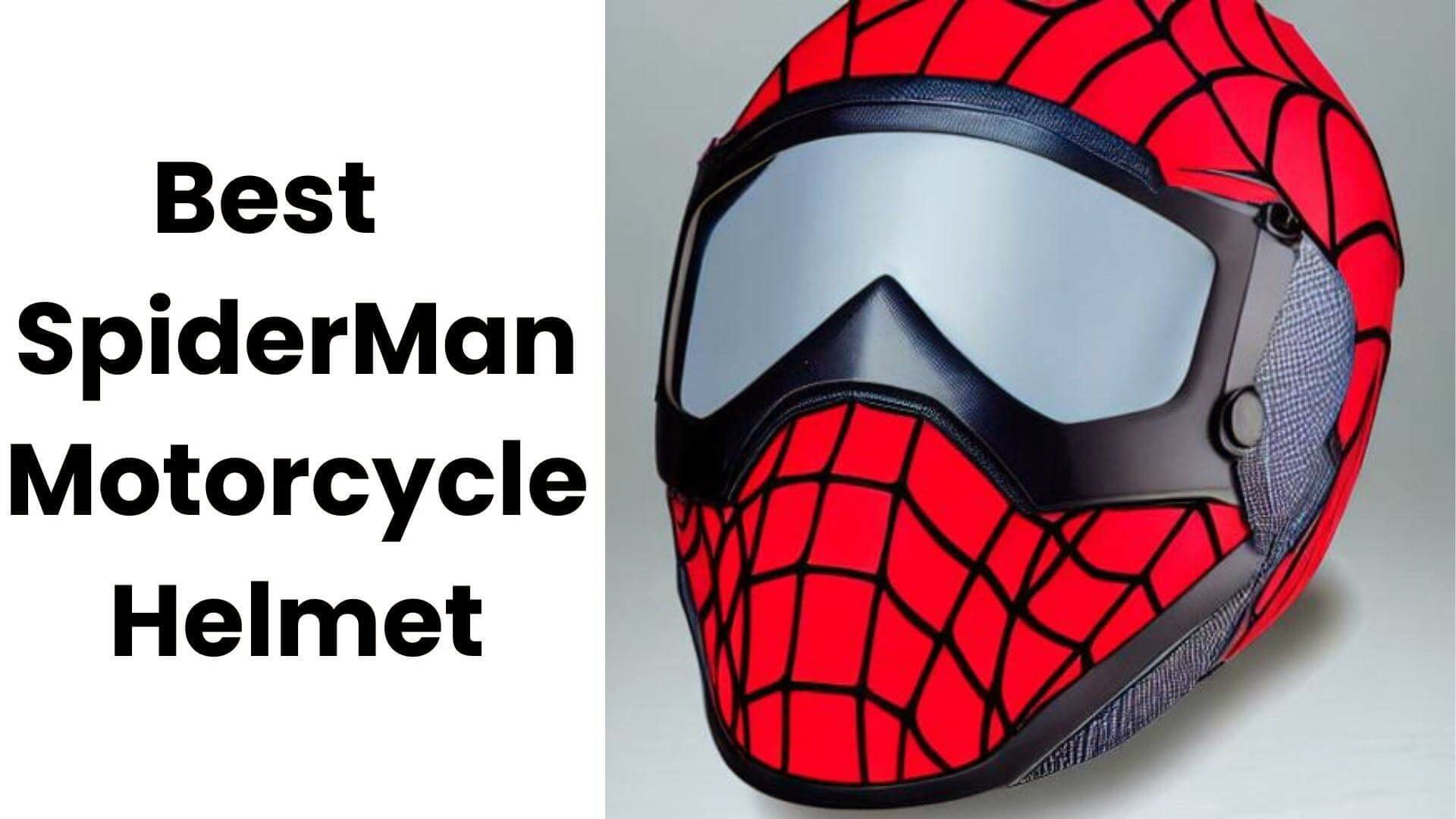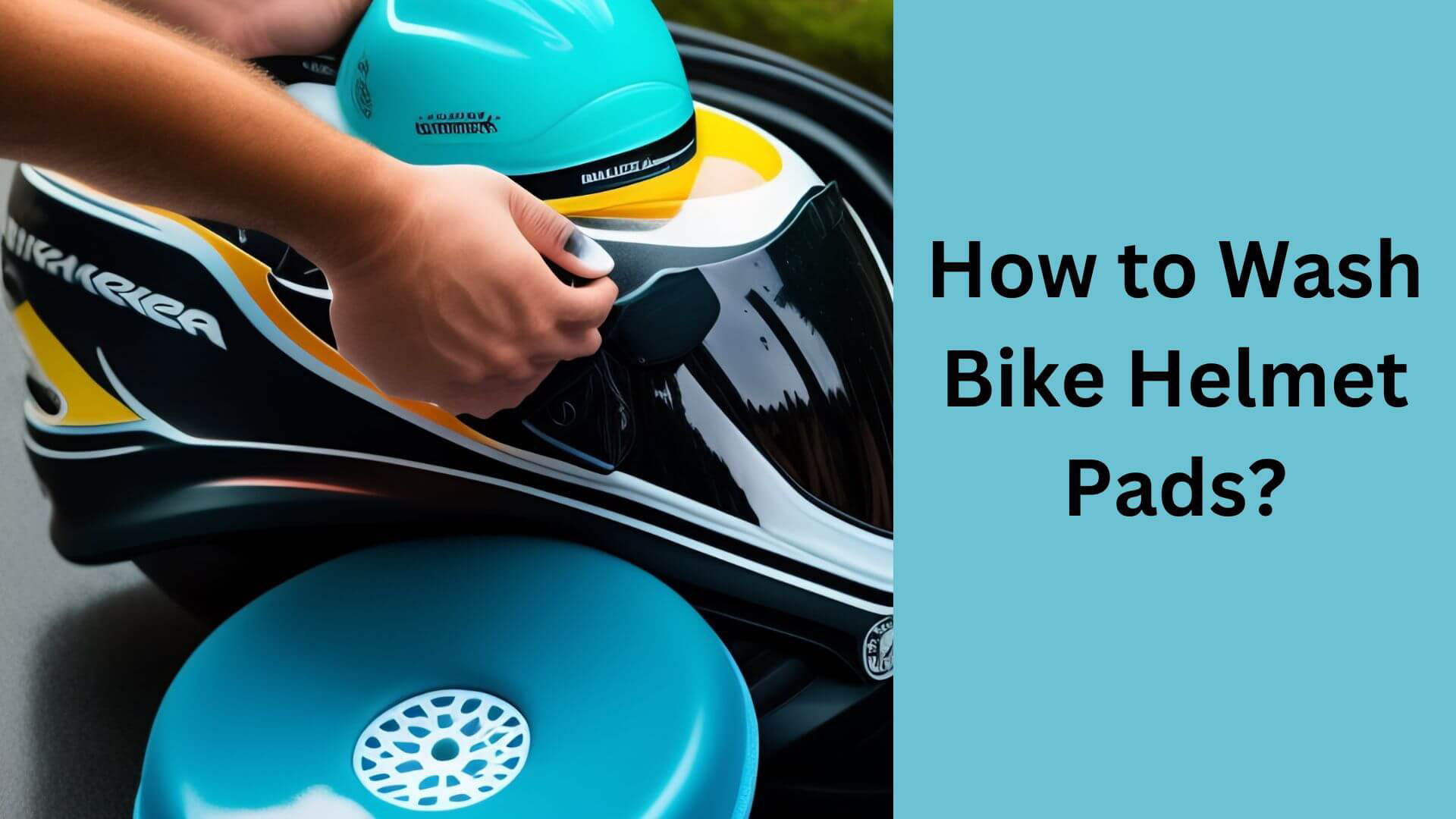How to Keep Your Bike Helmet Securely on Your Head?

Riding a bike is a fun and eco-friendly mode of transportation. However, accidents can happen anytime, and protecting your head while riding is crucial. A bike helmet is a vital protective gear that can save your life in an accident. This article will discuss how to keep your bike helmet securely on your head while riding.
Why is it Important to Keep a Helmet on a Bike?
It is essential to keep a helmet on a bike for several reasons:
- Protection from head injuries – A helmet can help protect the head from serious injury in an accident, reducing the risk of death or permanent disability.
- Legal compliance – In many jurisdictions, wearing a helmet while riding a bike is legally required, and failure to do so can result in fines or other penalties.
- Increased visibility – A brightly-colored or reflective helmet can increase the rider’s visibility to other road users, reducing the risk of accidents.
- Encouraging safe and responsible riding habits – Wearing a helmet is a symbol of safe and responsible riding habits and can help to raise awareness about the importance of safe riding practices.
By keeping a helmet on while riding a bike, riders can protect themselves from head injuries, ensure legal compliance, and encourage safe and responsible riding habits.
How to Check the Right Fit?
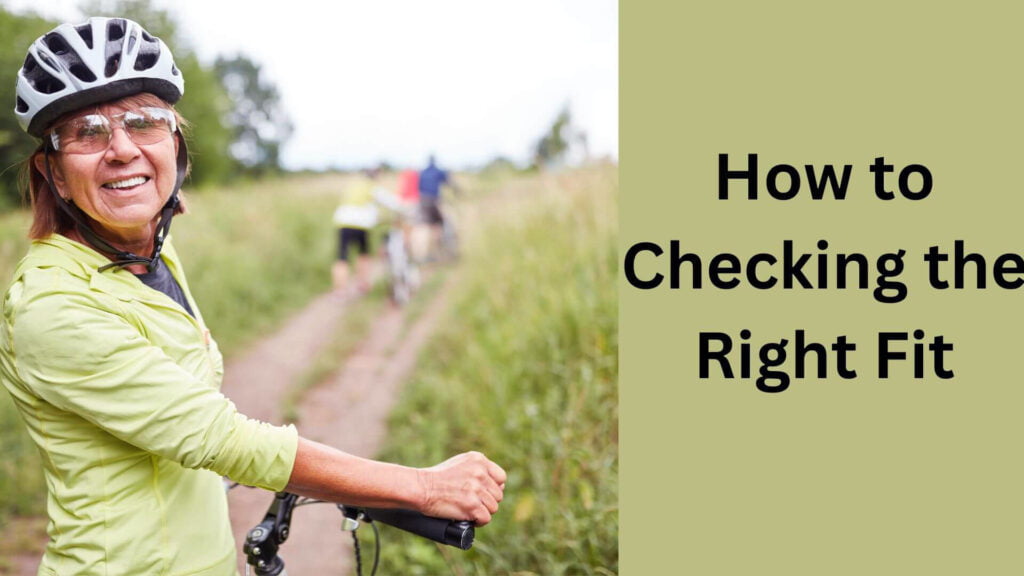
● Measuring the Head Circumference
The first step in ensuring that your bike helmet fits properly is to measure your head circumference. To do this, wrap a flexible tape measure around the widest part of your head, just above your eyebrows and ears. Write down this measurement, as it will be used to determine the helmet size you need.
● Choosing the Right Size
Once you have measured your head, you can use this measurement to choose the right size of helmet. Most bike helmet manufacturers provide a size chart that lists the head circumference measurement corresponding to each helmet size. Match your head circumference measurement to the chart, and choose the helmet size closest to your measurement.
● Adjusting the Straps for a Snug Fit
Once you have the right helmet size, the next step is to adjust the straps for a snug fit. The straps should be adjusted, so the helmet is level on your head, and the chin strap should be buckled securely. The straps should also be adjusted so the helmet is snug against your head but not so tight that it is uncomfortable. To achieve this, adjust the straps until you achieve a comfortable and secure fit.
It’s important to note that even the best-fitting helmet will only protect you if worn correctly. Check the fit and adjust the straps when you put on your helmet. Your helmet should fit snugly and be level on your head, with the chin strap securely fastened.
How to Properly Fastening the Helmet

● Buckling the Chin Strap
The chin strap is critical for your bike helmet and must be securely fastened while riding. To fasten the chin strap, buckle it under your chin, ensuring it is snug against your skin but not too tight that it is uncomfortable. The chin strap should be tight enough that you cannot pull the helmet off your head by tugging on the chin strap.
● Making Sure the Helmet is Level on the Head
It is crucial to ensure the helmet is level on your head, as this helps to distribute the force of impact evenly across the helmet in the event of a crash. Check the position of the helmet by looking in a mirror or asking someone to help you. If the helmet is tilted to one side, adjust the straps until level.
● Adjusting the Straps for Comfort
In addition to ensuring the helmet is level, it is also essential to adjust the straps for comfort. The straps should be adjusted so that they do not cause any pressure points on your head and so that the helmet feels snug and secure. Make any necessary adjustments by loosening or tightening the straps as needed.
In conclusion, properly fastening your bike helmet is essential for ensuring that it provides the best protection in case of an accident. Always buckle the chin strap securely, check that the helmet is on your head, and adjust the straps for comfort before every ride.
Read More: How to Measure for a Bike Helmet
How to Keep the Helmet Secure While Riding?
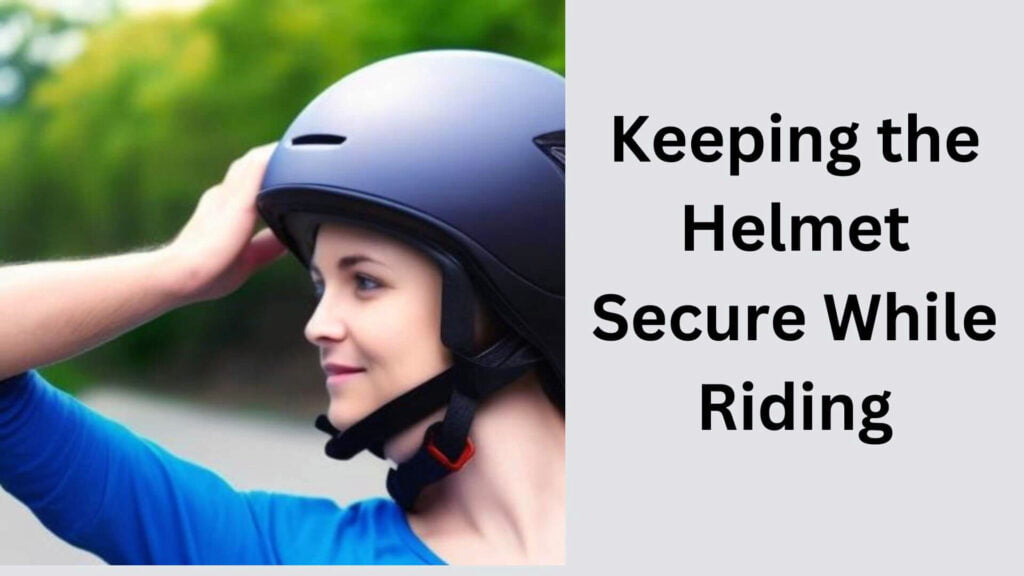
● Tucking in Loose Clothing
Loose clothing can easily get caught in the spokes of your bike or even in the helmet itself, causing it to shift or come off during a ride. To prevent this, it is important to tuck in any loose clothing or secure it with a bungee cord or other similar device.
● Avoiding Sudden Movements that May Shift the Helmet
Sudden movements, such as bending over or turning your head quickly, can cause the helmet to shift or even come off. To avoid this, make sure to keep your movements smooth and controlled while riding, and always keep an eye on the position of your helmet.
● Keeping an Eye on the Helmet During Rough Terrain
Riding over rough terrains, such as bumpy roads or rocky trails, can cause the helmet to shift or come off if it needs to be adequately secured. To prevent this, be mindful of the position of your helmet at all times, and adjust it if necessary. Additionally, it is a good idea to check the fit and adjust the straps before and after riding over rough terrain.
In conclusion, keeping your helmet secure while riding is essential for ensuring that it provides the best protection in case of an accident.
Make sure to tuck in loose clothing, avoid sudden movements that may shift the helmet, and keep an eye on the helmet during rough terrain. By doing these things, you can be confident that your helmet will stay in place and provide maximum protection.
What Are the Benefits of Keeping Helmets On Bikes?
Here are some benefits of keeping helmets on bikes:
- Protection from head injuries – The primary benefit of keeping a helmet on a bike is to protect the head from serious injury in case of an accident. Helmets are designed to absorb the impact of a crash, reducing the risk of head injury.
- Legal compliance – In many countries, it is a legal requirement to wear a helmet while riding a bike. Keeping a helmet on the bike helps to ensure compliance with these laws.
- Improved visibility – Brightly colored or reflective helmets can make you more visible to other road users, reducing the risk of accidents.
- Increased comfort – Helmets are designed to be comfortable and lightweight, so they do not add much additional weight or discomfort to the rider.
- Encouragement of safe riding habits – By keeping a helmet on the bike, riders are reminded to adopt safe and responsible riding habits, such as following traffic laws, being aware of their surroundings, and riding within their limits.
By keeping helmets on bikes, riders can enjoy increased safety, legal compliance, improved visibility, comfort, and responsible riding habits.
Read More: What to Look for in a Bike Helmet?
What Are Some Tips for Storing Your Bike?
- Choose a secure location – Store your bike in a secure location, such as a locked garage or a bike storage area, to reduce the risk of theft or damage.
- Hang the bike vertically – Hanging the bike vertically by the front wheel is a space-saving option and helps to keep the bike’s weight off the tires and frame.
- Cover the bike – Covering the bike with a protective cover can help to protect it from dust, debris, and other elements that could cause damage.
- Store the bike off the ground – Storing the bike off the ground can help reduce the risk of rust and corrosion and prevent damage from water or other elements on the ground.
- Check the bike regularly – Check it for any signs of wear or damage, and make repairs as needed to keep it in good condition.
- Lock the bike – Use a high-quality lock to secure and prevent theft. Make sure to lock the bike frame to a solid, immovable object, such as a bike rack or a tree.
By following these tips, you can keep your bike in good condition and reduce the risk of theft or damage while in storage.
Read More: Is it Illegal to Ride a Bike Without a Helmet?
What Are Some Other Safety Tips?
Here are some other safety tips for riding a bike:
- Wear protective gear – Besides a helmet, consider wearing other protective gear, such as gloves, eye protection, and appropriate clothing, to reduce the risk of injury in case of an accident.
- Follow traffic laws – Always follow traffic laws, such as riding in the same direction as traffic and using hand signals to indicate turns.
- Be visible – Wear bright or reflective clothing, use lights on the bike, and stay visible to other road users.
- Keep the bike in good condition – Regularly maintain the bike to ensure it is in good working condition and reduce the risk of mechanical failure while riding.
- Stay alert – Stay alert and aware of your surroundings while riding. Avoid distractions such as texting or listening to music, as they can impair your ability to react to changing road conditions.
- Plan your route – Plan your route ahead of time, and choose a route that is safe and free of traffic.
- Stay hydrated – Drink plenty of water before and during your ride, especially in hot weather.
By following these safety tips, riders can reduce the risk of injury and enjoy a safe and responsible bike riding experience.
FAQS Questions About How to keep Helmet on Bike
What are some ways to keep a helmet secure while riding a bike?
Answer: Some ways to keep a helmet secure while riding a bike include checking for the right fit, fastening the chin strap, tucking in loose clothing, avoiding sudden movements, and keeping an eye on the helmet during rough terrain.
Conclusion
● Recap of the Steps to Keep the Helmet Secure
This article outlines the steps you need to take to keep your bike helmet secure while riding. These include: checking the right fit, properly fastening the helmet, and keeping the helmet secure while riding. By following these steps, you can ensure that your helmet provides maximum protection in case of an accident.
● Emphasizing the Importance of Wearing a Helmet
Wearing a bike helmet is one of the most important safety precautions you can take while riding. It helps protect your head and reduce the risk of serious injury in an accident. It is essential to ensure that your helmet fits properly, is fastened securely, and stays in place while riding.
● Encouraging Safe and Responsible Riding Habits
In addition to wearing a helmet, it is essential to adopt safe and responsible riding habits to reduce the risk of accidents. This includes riding within your limits, being aware of your surroundings, and following all traffic laws and regulations. By doing these things, you can ensure that you have a safe and enjoyable riding experience.
In conclusion, wearing a helmet and adopting safe and responsible riding habits are critical for ensuring your bike safety.
By following the steps outlined in this article, you can be confident that your helmet will stay in place and provide maximum protection. Remember always to prioritize your safety and enjoy your rides responsibly.

Hey, I’m Hrithik Hossain. I am the head of helmethacks.com, which specializes in safety helmets. I am looking to connect with anyone interested in purchasing a helmet or who has any questions about different types of helmets. I have over 8 years of experience as a helmet expert, and I can’t wait to help you find the perfect helmet for you. I can help you with any questions regarding helmets, from the best brands to fitting, style, and more! I really enjoy keeping people safe by ensuring they have the best protection possible.

